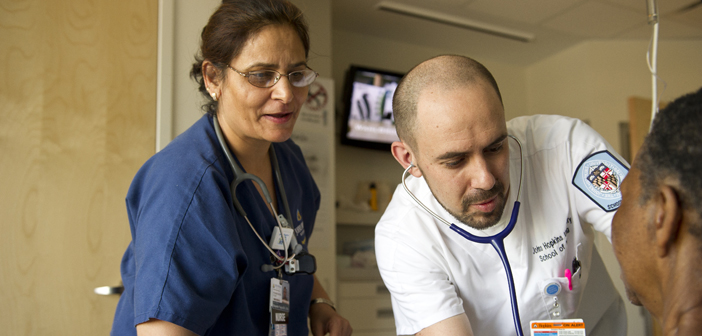“Palliative care” is a misunderstood term, but not for much longer if we can help it.
For the record, palliative care is not hospice care, in which patients and families are provided comfort in the final days and weeks of life. Hospice is incredibly important, meaningful care and ideally part of a longer term palliative care strategy. The goal of palliative care teams—nurses, physicians, chaplains, and others—is starting early, and maintaining quality of life for as long as we can. Sometimes that means to the point of a cure or a recovery but also death and dying.
Palliative care begins as soon as there is a cancer diagnosis, say, or when a chronic heart condition begins to affect the quality of life, or when a patient is too sick to come to the hospital. It is also when a patient in a hospital bed at 3 a.m. (or a family in a neonatal intensive care unit) has had time to allow a potentially frightening prognosis to sink in.
It is about health care teamwork, and in a very big way it is about education—of patients and families, naturally, but also of nursing and medical students as well as policy makers. This is why we take great pains to instill in every student a feel for when and how to step in. Such care is as crucial and might one day be as expected by patients as it is exceptionally rewarding for nurses.
You can read the full blog entry at huffingtonpost.com.
ABOUT THE AUTHOR: PATRICIA M. DAVIDSON
 Patricia M. Davidson, PhD, MEd, RN, is dean of the Johns Hopkins School of Nursing and a fellow of the Australian College of Nursing, the American Heart Association, the Preventive Cardiovascular Nurses Association, and the American Academy of Nursing. She is counsel general of the International Council on Women’s Health Issues and actively involved in the international activities of Sigma Theta Tau International. Follow her on Twitter (@nursingdean).
Patricia M. Davidson, PhD, MEd, RN, is dean of the Johns Hopkins School of Nursing and a fellow of the Australian College of Nursing, the American Heart Association, the Preventive Cardiovascular Nurses Association, and the American Academy of Nursing. She is counsel general of the International Council on Women’s Health Issues and actively involved in the international activities of Sigma Theta Tau International. Follow her on Twitter (@nursingdean).
